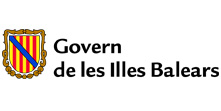Presentation
Joan Miró was widely recognised during his own lifetime and, with the passing of the years, his influence and standing have grown enormously, as is the case with truly great artists.
The exhibition that we are now pleased and proud to present consists of some 40 works—paintings, sculptures and a tapestry from private collections, some of them never shown in public before—produced by Miró during the 1960s and 70s, giving us insights into one of the most fertile yet least studied periods of the artist’s career. In addition, it reveals to us the artist’s “personal cosmos” that Eugeni d’Ors referred to.
Miró used a wide range of supports and techniques over the course of his life, among them canvas, Masonite, paper, cardboard, plastic and wood, as well as oils, enamels, Indian ink, watercolour, gouache, wax, pencil, charcoal, etc. He developed an interest in discarded materials and objects of humble origin. With his characteristic modesty, he said of himself, “I work like a gardener”. Everything he touched turned into pure poetry in the garden he cultivated, in which flowers still blossom and will continue to do so hereafter.
This immense variety of techniques and supports is represented in this body of work that reveals to us this genius in all his splendour and which enables us to grasp that spirit of innovation and transgression that has made him an icon not just of the 20th century but of the entire history of art.
Joan Miró. The Light of the Night. Works from the 1960s and 70s will be shown firstly at the Ibiza Museum of Contemporary Art, then at El Roser in Ciutadella de Menorca—the presence of Miró’s work for the first time on both islands makes this a particularly special exhibition—and finally in Palma de Mallorca, at the foundation that bears his name and which he generously donated to us.
The essays in the catalogue, written by Joan Punyet Miró, Enrique Juncosa, Colm Tóibín and José María Pardo, will prove essential reading for those who wish to learn more about Miró’s universe, guided by the insightful reflections of those who know better than most the codes that structured his work.
I would like to pass on my thanks to the exhibition curator, Enrique Juncosa, to everyone who has worked with dedication and enthusiasm to make this show a reality, and to our sponsors and patrons, mainly the “la Caixa” Foundation, for their invaluable support. I would like to express my particular gratitude to the artist’s heirs: seeing a project of this nature through to fruition would have been unthinkable without their personal and passionate involvement.
José Ramón Bauzá Díaz
President of the Balearic Islands










